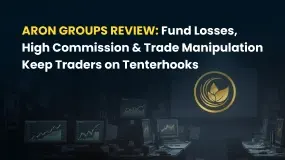简体中文
繁體中文
English
Pусский
日本語
ภาษาไทย
Tiếng Việt
Bahasa Indonesia
Español
हिन्दी
Filippiiniläinen
Français
Deutsch
Português
Türkçe
한국어
العربية
Trend Following vs. Counter-Trend Trading: Which is Right for You?
Abstract:Two prominent strategies often compete for the attention of traders: trend following and counter-trend trading. Each method has its strengths and weaknesses, and understanding them can help you choose the approach that aligns best with your trading style and risk tolerance.

Two prominent strategies often compete for the attention of traders: trend following and counter-trend trading. Each method has its strengths and weaknesses, and understanding them can help you choose the approach that aligns best with your trading style and risk tolerance.
Trend Following: Pros and Cons
Pros:
Capitalizing on Momentum:
Trend-following strategies aim to capture gains by riding established market trends. When a trend is in place, prices tend to continue moving in that direction, providing profit opportunities.
Clear Signals:
Trend followers often use technical indicators, such as moving averages and trend lines, which provide clear entry and exit signals. This can simplify decision-making and help traders stay disciplined.
Higher Win Rate:
Many trend followers report a higher win rate because they trade in the direction of the market, reducing the likelihood of premature exits.
Cons:
Late Entry Risk:
Trend followers may miss the optimal entry point, leading to reduced profit potential. By the time they enter a trade, a significant portion of the trend may have already occurred.
Whipsaw Risk:
In choppy or sideways markets, trend-following strategies can generate false signals, leading to losses. This makes it crucial for traders to identify strong trends before committing capital.
Emotional Stress:
Riding a trend can be mentally taxing, especially during pullbacks. Traders must maintain discipline and resist the urge to exit too early.
Counter-Trend Trading: Pros and Cons
Pros:
Profit from Market Corrections:
Counter-trend trading seeks to capitalize on price reversals, allowing traders to profit from corrections against the prevailing trend. This can be particularly rewarding in volatile markets.
Potential for High Rewards:
Successfully identifying trend reversals can lead to substantial profits, as counter-trend traders can enter positions at advantageous prices.
Flexibility:
Counter-trend traders can adapt to various market conditions, making it a versatile strategy for different trading environments.
Cons:
Higher Risk:
Counter-trend trading is inherently riskier, as traders are often going against the market momentum. This can result in significant losses if the trend continues.
Frequent Losses:
Counter-trend traders may experience more losing trades, as not all corrections lead to reversals. This can be discouraging for some traders.
Requires Strong Analysis:
Successfully identifying reversals requires a deep understanding of market dynamics, technical analysis, and the ability to read price action.

Choosing the Right Strategy for You
Selecting between trend following and counter-trend trading ultimately depends on your individual preferences and circumstances:
Risk Tolerance:
If you have a low tolerance for risk and prefer a more systematic approach, trend following may suit you better. Conversely, if you can handle higher risk and are comfortable with the potential for more frequent losses, counter-trend trading could be a good fit.
Time Commitment:
Trend following often requires ongoing analysis and monitoring of market conditions, while counter-trend trading can demand quick decision-making. Consider how much time you can dedicate to trading.
Personality:
Your personality plays a significant role in choosing a strategy. If you thrive on excitement and enjoy the challenge of going against the grain, counter-trend trading may appeal to you. If you prefer a more structured approach with clear signals, trend following might be the way to go.
Market Conditions:
The prevailing market environment can influence your choice. In strong trending markets, trend following tends to be more effective, while counter-trend trading may be more advantageous in choppy or range-bound conditions.
Conclusion
Both trend following and counter-trend trading have their merits, and the best choice depends on your trading style, risk tolerance, and market conditions. By evaluating your preferences and the characteristics of each strategy, you can make an informed decision that enhances your trading experience.
Consider testing both strategies on a demo account to see which aligns better with your goals and personality. Ultimately, understanding your strengths and weaknesses as a trader will empower you to navigate the markets more effectively.

Disclaimer:
The views in this article only represent the author's personal views, and do not constitute investment advice on this platform. This platform does not guarantee the accuracy, completeness and timeliness of the information in the article, and will not be liable for any loss caused by the use of or reliance on the information in the article.
Read more

Voices of the Golden Insight Award Jury | Nattachai Chalermwat, MH Markets
WikiFX Golden Insight Award uniting industry forces to build a safe and healthy forex ecosystem, driving industry innovation and sustainable development, launches a new feature series — “Voices of the Golden Insight Awards Jury.” Through in-depth conversations with distinguished judges, this series explores the evolving landscape of the forex industry and the shared mission to promote innovation, ethics, and sustainability.

Apex Markets Review: Traders Outraged Over Withdrawal Denials & Other Trading Issues
Struggling to access fund withdrawals from Apex Markets for months? Does the broker remain silent on fund withdrawal issues? Does the Saint Vincent and the Grenadines-based forex broker reject your winning trades? Have you failed to get a refund into the card used for deposits? Did the broker deduct from your trading account instead? Traders have been imposing these scam allegations while sharing the Apex Markets Review online. We read the reviews and shared some of them below. Take a look!

tastyfx Exposed: Fund Losses, Trade Manipulation & Account Related Hassles Hurt Traders
Are fund losses normal for you at tastyfx? Does the US-based forex broker constantly manipulate prices to hit your trading experience? Do you fail to receive a reply from the broker on your fund withdrawal requests? Do you constantly face trading account issues with tastyfx? It’s time to read the tastyfx review shared by traders online.

Aron Groups Review: Fund Losses, High Commission & Trade Manipulation Keep Traders on Tenterhooks
Have you lost your hard-earned capital while trading via Aron Groups Broker? Has the high commission charged by the broker substantially reduced your trading profits? Does the Marshall Islands-based forex broker constantly manipulate spreads to widen your capital losses? Have you been lured into trading courtesy of Aron Groups No Deposit Bonus, only to find that you had to deposit capital to get a bonus? All these and many more trading issues have become synonymous with the experience of Aron Groups’ traders. Consequently, many traders have shared negative Aron Groups reviews online. In this article, we have shared some of their reviews.
WikiFX Broker
Latest News
Pinched By Penny Shortage, US Retailers Beg Congress To Step In
PINAKINE Broker India Review 2025: A Complete Guide to Safety and Services
The United States Outgrows All Its Major Peers
Canary Wharf Address Scam Resurfaces: FCA Exposes 20+ Clone Template Forex Platforms
Seychelles FSA Flags Clone Website Impersonating Admiral Markets
Is Nash Markets Regulated or Risk? Truth About Nash Markets’ License & Withdrawal Issues
Webull Widens Crypto Futures with Coinbase Derivatives
Latest FCA Daily Alerts and Consumer Warnings for 2025
CySEC Blocks Certification Access to Combat Advisor Impersonation
Angel one 2025 Review & Complaints
Currency Calculator




